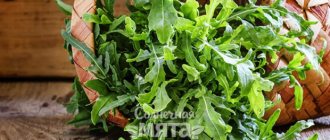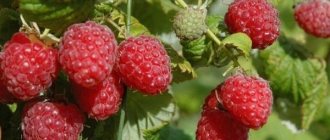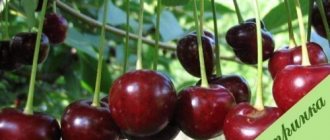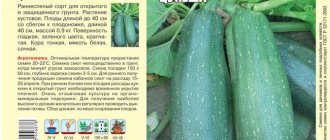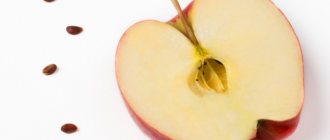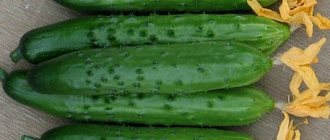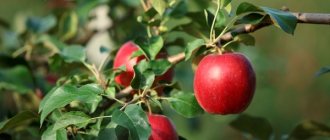Cucumber is a vegetable loved and sought after by many people. In total, there are more than 850 varieties of this useful product. Dutch breeders offered consumers from different countries about 80 types of cucumbers. After which, residents of Russia, India, the USA, England and other countries appreciated the Dutch varieties of cucumbers. Read more about these tasty and healthy vegetables in the text.
Dutch varieties of cucumbers
Wide variety of species
An annual plant that produces fruit is distinguished by:
- Size - from small fruits to cucumbers up to 80 cm;
- Color – from typical green to brown;
- Lumpy surface – from pimply to smooth;
- Shape – from round to elongated, oblong;
- Planting methods;
- Pollination methods or lack thereof;
- Productivity;
- Taste qualities;
- Duration of ripening;
- Duration of storage.
Important! These cucumbers are distinguished by their neat size, taste without bitterness, multiple storage methods and quick ripening.
Classification of hybrids
Growing conditions for cucumbers vary in the degree of openness of the soil. For greenhouse crops, an important factor is the method of pollination; in greenhouses it is better to grow cucumbers that do not require pollination. These are parthenocarpic and self-pollinating species. It is precisely these types of hybrids that predominate among Dutch seeds, so they can be grown both in greenhouses and in an open garden plot or field.
The next classification that you need to pay attention to when purchasing seeds is ripening time. There are:
- early varieties;
- mid-season;
- with late ripening.
Advice! When choosing seeds, it is necessary to take into account that early ripening varieties have a short fruiting period, but the first cucumbers appear quickly. If a long fruiting period is important for a gardener, it is better to prefer seeds of mid-season or late varieties.
The last division of varieties is carried out depending on the purpose of cucumbers, there are:
- Salad cucumbers that should be eaten fresh.
- Pickling or preservation varieties tolerate contact with brine and heat treatment well.
- Versatile varieties can be eaten raw or canned.
How to choose your variety?
Some types of this vegetable grow well in open areas, others bear fruit in a greenhouse. The taste also differs among the subspecies of Dutch cultures - from sweetish to soft neutral. Some varieties are delicious marinated or pickled, while others are great straight from the bush.
Selected Dutch cucumbers - as per selection
So how do you choose your vegetable variety? To do this, you need to decide on a number of factors:
- What zone and climatic conditions do you live in?
- When is it preferable to harvest - in mid-summer or autumn;
- Where do you want to plant the crop - in the open air, in a greenhouse, greenhouse, at home on the balcony;
- How important is it that the plant does not get sick and is not susceptible to viruses and pathogens;
- What yield suits you?
- How do you plan to preserve the crop - by canning or fresh;
- In what form is it preferable to consume the vegetable?
- Do you plan to grow a crop for yourself or for sale - in large quantities.
Attention! When the answers are received, you can decide on the variety of Dutch cucumbers - you will definitely find a variety that meets all your criteria.
Prices for cucumber seeds
cucumber seeds
How to choose cucumbers
Many people want cucumbers to be:
- small;
- crispy;
- pimply;
- with a rich taste;
- no bitter aftertaste;
- not very watery;
- high yield;
- fast maturation;
- were not sick;
- unpretentious to growing conditions;
- beautiful shape;
- universal - for canning and salads.
Beautiful and tasty
Important! Almost all of these criteria are present in Dutch cucumbers. They are tasty and healthy, they contain iodine, potassium and other useful substances.
Risks
It is better to familiarize yourself with the responsibilities of one or another type of Dutch cucumber in advance so that your seedlings take root on the site, the bush does not get sick, and the yield is as planned.
To avoid surprises, it is worth knowing that cucumber varieties that ripen faster than others are more susceptible to diseases. Experts believe that this is due to the short period of fruiting. Late varieties ripen better and rarely get sick.
Powdery mildew on cucumbers
More often, Dutch women are exposed to diseases:
- powdery mildew - real and downy;
- angular spotting;
- white and gray rot.
Diseases of cucumbers and how to combat them
Attention! Diseases can be avoided if you properly prepare the crop for planting and properly cultivate the soil.
Why the Dutch are the best
Dutch hybrids received the title of “best” for a number of reasons, the most important of which:
- Good adaptability to local climatic conditions. Unlike “Asians,” seeds from Europe are more adapted to the temperature regime of Russian regions. Cucumber seeds are hardened and can withstand temperature surges and changes.
- Plants are resistant to most diseases characteristic of cucumbers. The seeds are processed and are completely ready for planting in the ground.
- Most often, the ovaries of Dutch cucumbers appear in clusters - 5-10 fruits grow from one node.
- The high yield of hybrids is ensured by their resistance to external factors.
- The taste qualities of the “Dutch” varieties are in no way inferior to Russian varieties. Hybrid cucumbers can be used for salads and for preservation.
- No bitterness. A bitter taste appears in cucumber due to a violation of the water-temperature regime. And Dutch hybrids are completely devoid of the enzyme that is responsible for bitterness, so these cucumbers are never bitter.
- Fast maturation. Both early and late varieties of Dutch selection are characterized by rapid fruit ripening. On average, the period from the appearance of the first leaves to the ripening of cucumbers is about a month.
Important! The only drawback of Dutch hybrids is the lack of seeds suitable for further planting. Seeds inside hybrids most often do not germinate, and if an ovary does appear from them, the cucumbers will grow defective, with a violation of genetic connections.
The material from the purchased bag is completely ready for planting; the seeds do not require additional processing or hardening.
All of the listed characteristics indicate the high quality of Dutch seeds.
Fast ripening cucumber varieties
When choosing a variety, it is worth considering that all early or mid-ripening Dutch cucumbers ripen within five to six weeks. There are varieties that can be classified into groups:
Extra early - 32-35 days, Hector;
Hector cucumber variety
Early – up to 45 days, Angelina;
Cucumber variety Angelina
Mid-early – up to 50 days, Athena.
Cucumber variety Athena
Attention! Late cucumbers mainly include species of domestic selection. Therefore, if you need to harvest in the fall, then turn to our Russian crops.
Growing in open ground
Vegetables grown in open ground require pollination by insects. They are planted in open-air garden beds. A variety of varieties, including species that require:
- high humidity;
- lots of sunshine;
- constant shadow;
- low moisture content in the soil;
- clay soils;
- acidic or neutral soils and so on.
Different varieties require different planting locations - in the sun or in the shade
You need to know everything about the variety you have chosen. And the main thing is whether it suits your conditions in which the plant should develop.
Important! Pollinated varieties have a more pronounced smell, taste, and are crispier.
Table 1. The most common types and their characteristics.
| Variety | Characteristics |
| Sonata f1 | Ripens in no more than 45 days, average length, resistant to any diseases, pimply, up to 8-9 kg can be harvested from one bush. |
| Ajax f1 | It ripens for about 2 months, the fruits are no more than 10 cm, have a sweetish taste, are consumed both fresh and canned. |
| Madita f1 | It is bright in color, pimply fruit of medium length, has a bright taste, is not susceptible to typical diseases, and there is no bitterness in the variety. |
| Athena f1 | Fragrant, tasty fruits are small in size, light green in color, universal in use, seeds are sown only in warm soil. |
Attention! If necessary, these varieties can also be planted in closed buildings for vegetables, only taking into account full access of bees - for pollination of the crop, otherwise the fruits will not set.
Growing in a greenhouse
Self-pollinating cucumbers can be planted in closed buildings. They do not require pollen to be carried by insects. This makes it possible to grow Dutch fruits even in cold temperature conditions, which is extremely important for residents of the northern regions of the country.
Magdalena and Karina love greenhouse conditions
Attention! Cucumbers that do not require pollination are planted in the greenhouse; they belong to the parthenocarpic group, of which there are many among the Dutch species.
Table 2. Common parthenocarpic Dutch cucumbers and their characteristics.
| Variety | Characteristics |
| Magdalena f1 | Ripens quickly (no more than 40 days), can also bear fruit in open areas, small in size, can be bred to produce pickles and gherkins, original color - with dark longitudinal stripes. |
| Monolith | It belongs to the salad species, as it has an exquisite taste, is crunchy, with pimples, and is small in size. |
| Pro f1 | A short ripening period, a strong root system contributes to resistance to external factors, firm, with a rich taste and aroma. |
| Baby mini | Early ripening, not prone to overgrowth, juicy, aromatic, tasty, small in size - 7-8 cm. |
| Karina | Quickly ripening, no bitterness, high yield, length does not exceed 10 cm. |
| Platinum f1 | Quickly ripening gherkin fruits with a lumpy surface, high yield, excellent taste, universal in use. |
| Crispina f1 | Can also bear fruit on the ground, medium size - up to 12-13 cm, color - light with longitudinal stripes, universal in preparation, medium lumpy surface. |
| Levina f1 | A very lumpy cucumber, up to 11 cm long, of different shades, easy to care for and rarely gets sick. |
You can read more about the technology of growing cucumbers in a greenhouse in our article.
Features of growing and caring for Dutch crops
The basic techniques of agricultural technology are standard, but it is important to take into account the recommendations of breeders for specific varieties. The yield indicators declared by the manufacturers are achieved if the rules of care are followed, increased rates of fertilizing are applied, and the plants are properly shaped.
You may be interested in:
Feeding cucumbers during the fruiting period to increase the yield Many gardeners say that growing cucumbers correctly in the garden is not the easiest task, let alone...Read more...
Sowing seeds
“Dutches” are cultivated in shelters, in OG, sowing directly into beds or growing seedlings. In most regions of the country, seedlings are grown first, thereby reducing the time before receiving the first greens.
If the seeds are multi-colored, then they do not need processing or pre-germination. Sow in prepared containers:
- boxes (diving will be required after two true leaves appear);
- plastic cups;
- peat pots or tablets.
On a note!
It is most convenient to grow cucumber seedlings in peat pots. When planting in a permanent place, seedlings are placed in holes immediately with the substrate, avoiding damage to the roots.
The volume of the pots is 0.5 liters, the height is no more than 12 cm. The containers must have drainage holes to remove excess moisture. Ready-made compounds are used as soil mixtures or the soil components are mixed independently. Pure peat mixtures are not suitable for cucumbers; it is recommended to add humus and river sand.
The timing of sowing depends on the climatic conditions of the area and the further location of the crop. Cucumber seedlings are planted at the age of 23-25 days, when stable heat sets in. Calculate the sowing time taking into account the days for germination (4-9 days) and the weather forecast.
Approximate dates for sowing seedlings:
- in the middle zone - April (with planting in May on ridges of open ground and in greenhouses);
- in the Urals, in Siberia - in early May (with planting in early June).
In the south, cucumbers are sown directly into the ground in a permanent place, the timing is April-May.
During the growing of seedlings, the plants are regularly watered and fed 1-2 times with complex fertilizer or ready-made compounds (Kemira, Agricola). Approximately 10-14 days before planting, the seedlings are taken outside, onto the veranda or onto the balcony for hardening.
Growing in open ground
Bee-pollinated cucumbers are more often cultivated in open ground, since it is easier to ensure pollination of plants by insects. On ridges, bushes are grown spread out on trellises (coarse mesh).
Take into account the features of hybrids:
- growth rate;
- branching;
- method of cultivation (without trellises or on supports).
Maintain distances between seedlings, especially if the crop is planted on a spread. Powerful plants require a large area for adequate nutrition and freedom, so leave a distance of at least 45-60 cm.
Watering takes into account weather conditions and amount of precipitation. Before flowering, the watering rate is up to 1.5 liters per bush, from the moment of flowering and during the period of green growth – up to 3-4 liters for each adult plant. The row spacing is mulched with hay, humus or peat.
Fertilizing for powerful cucumbers is necessary, 4-5 times a season. Even if the soil was well fertilized before planting, the crop quickly takes nutrients from the soil. At the beginning of the growing season, nitrogen supplements are introduced (mullein, poultry droppings diluted with water 1:10, 1:20), later they move on to fertilizing with potassium and phosphate fertilizers (potassium sulfate, superphosphate, wood ash).
There is no need to form varieties in the garden (when growing in spreads); when planting on trellises, the side canes are pinched. It is necessary to take into account the characteristics of hybrids, since in bunched cucumbers greens are formed mainly on the central stem, while in other species there are more fruits on the side vines.
To attract bees to the cucumbers, honey plants - fennel, clover, phacelia - are planted next to the beds. If the description of the hybrid indicates that replanting of a pollinator variety is required, any hybrid with a large number of male flowers is planted. In cloudy weather and prolonged rains, when insects do not fly, cucumbers are pollinated by hand, using female and male flowers. To transfer pollen, use a brush or cotton swab.
On a note!
When growing parthenocarpic species, there is no need for pollination.
Growing in a greenhouse
Agricultural technology for greenhouse cucumbers has a number of features related to irrigation and plant formation. Parthenocarpics are often planted in shelters; they grow well in greenhouses and do not require pollination by bees.
The first watering is 4-6 days after planting, then water moderately, avoiding waterlogging and drying out of the soil. As soon as the fruiting period begins, the norm is increased (up to 3-5 liters per bush). Dutch hybrids are distinguished by their resistance to temperature changes and plasticity, but it is desirable to provide the culture with comfortable, stress-free conditions.
Mulching is used to retain moisture in the soil. Humus, peat, hay, and straw (chopped) are suitable as mulch. Mulch will protect against drought, waterlogging, and keep away weeds. The maximum humidity in the greenhouse is 70%.
The feeding scheme is similar to applying fertilizers to open ground cucumbers. Fertilize abundantly fruiting hybrids once every 8-10 days, preferably after watering, so as not to damage or burn the roots of the cucumbers. It is advisable to alternate root and leaf feeding, mineral compounds and organic matter. Plants react positively to the application of infusions of wood ash and green fertilizers from fermented grass (comfrey, dandelion).
For spraying in the greenhouse, solutions of ash, boric acid, and iodine are used, which increase the number of ovaries and help improve immunity.
On a note!
Feeding vigorous hybrids with chelated fertilizers gives good results.
The maximum yield is obtained from Dutch varieties only if the plants are properly shaped. Each description of a hybrid indicates the formation pattern and the type of plant.
Approximate diagram:
- in the first axils of leaves (up to 3-4) the ovaries are blinded;
- at a height of up to half a meter, pinch the side lashes into one ovary and two leaves;
- higher up (up to one and a half meters) a pair of ovaries and 2-3 leaves are left;
- Next, the lashes are cut off above the third leaf and four ovaries are kept on it.
Parthenocarpic and bee-pollinated cucumbers are grown on trellises in a greenhouse. This inverted “pyramid” scheme ensures uniform fruiting of the hybrid, good illumination of the plants, and regulation of the load on the bush. Just as on ridges, for bee-pollinated species, in the absence of insects, the procedure of manual pollination of the ovaries is carried out.
Collecting greens during the fruiting period is regular. Hybrids from Holland rarely outgrow or turn yellow, but delayed harvesting of fruits slows down the ripening of subsequent batches of cucumbers and reduces the overall yield per bush.
Self-pollinating varieties
These species can be planted both in the garden and in greenhouses. Place in this variety does not matter. Much more important are the soils, which must be fed with organic additives and mineral fertilizers. Angelina f1 is often planted in Russia - a fast-ripening species - within 6 weeks. Cucumbers are small and pimply, crispy and tasty in any dish.
Self-pollinating crops also include the following species:
- Herman f1,
- Hector f1,
- Prestige f1.
Attention! Self-pollinating varieties cannot produce seeds for planting next year.
Origin of hybrid cucumbers
Hybrids are the descendants of several crossed varieties. Selection of high-quality hybrid cucumber requires years of scientific work and annual cultivation of crossed crops. Only in the 5-10th generation do breeders get the best results - those hybrids whose seeds will be sold.
Such painstaking work determines the high cost of hybrid seeds. As a rule, their price is several times higher than the cost of varietal cucumbers.
Many countries today are engaged in breeding; on the domestic market you can find seeds of German, Chinese, Japanese and, of course, Dutch origin.
“Dutch” appeared in Russia earlier than other hybrids, and to this day remains the most popular among farmers and gardeners.
This demand is completely justified; Dutch cucumbers have a number of exceptional qualities and characteristics.
The best Dutch varieties of cucumbers
General advantages of Dutch cucumbers that make them planted:
- Small size.
- Crispy.
- Fragrant.
- Solid.
- They are content with small areas for planting.
- Resistant to pests and fungi.
- They even grow in the shade or in dense plantings.
- No barren flower.
- Excellent taste.
- They are used not only for food, but also for medicinal and cosmetic purposes.
Cucumbers are used in cosmetology
The most popular varieties among Russians are:
- Angelina;
- Ajax;
- Bettina;
- Hector;
- Satina.
Attention! All of these species are distinguished by their exquisite taste, good yield, resistance to diseases and climate changes, unpretentiousness to growing conditions, versatility in preparation and consumption.
Medicinal properties of cucumber
This tasty vegetable is mostly water - more than 90 percent, so its consumption:
- Good for preventing hunger;
- Quickly saturates the body without extra calories;
- Has a cleansing effect;
- Has a gentle effect on the digestive organs;
- Helps neutralize harmful microelements in the body.
Cucumbers are not only placed on the face in the form of masks, but also used in dietary nutrition for many diseases.
Attention! The Dutch cucumber does not contain a single trace element that can cause allergic reactions.
The unique composition ensures that cucumbers are included in any diet for various diseases:
- digestive organs;
- endocrine system;
- associated with metabolic disorders;
- cardiovascular diseases and so on.
Important! It has been scientifically proven that cucumber juice can dissolve and remove stones from the bile ducts, and also helps normalize metabolic processes in the body.
All healing properties are associated with the presence of the following components in the culture:
- potassium;
- sodium;
- fiber;
- iodine;
- groups of various vitamins - C, B, A and others.
Attention! All these properties help in the use of cucumber for the preparation of cosmetics - soothing and toning the skin, preventing early aging and the appearance of wrinkles.
How do Dutch seeds differ from domestic ones?
Domestic and imported selections differ in all their characteristics. The packaging of Dutch cucumber seeds has a distinctive marking - f1. These are several species crossed to create more stable immunity in the plant and improve the taste of the fruit. Hybrids are superior to domestic ones in all characteristics and features. However, the Dutch species have a main, quite important drawback - the seeds from cucumbers will not produce a harvest in the new season. We will have to turn again to specialized stores, equipped with a wider assortment; the market for vegetable selections is continuously developing and improving. Scientists are looking for opportunities to develop better and better selections that will be sold on a large scale. Dutch seeds can be considered one of the innovations in vegetable culture.
The advantage of Dutch species over domestic ones is that cucumbers can develop even in greenhouse conditions, since self-pollination occurs during the flowering period. Domestic ones are pollinated and should grow in open ground or in a room accessible to bees. There are pollinated plants among foreign selection
When planting seeds, it is important to consider the following factors:
- underground water level;
- climatic conditions;
- soil composition;
- winter storage;
- taste qualities.
They are especially good for their rich cucumber taste, sharp pleasant smell and juicy fruits, and when preserved they remain hard and remain crispy.
How to grow cucumbers on the balcony at homeGetting a harvest of cucumbers at home is a very real task. You just need to purchase the right seeds and...
A good harvest - in a short time, how to plant
Dutch breeders often have “f1” on their cucumber varieties - this is an indication that two varieties were crossed and the result was a variety with better characteristics:
- immunity to diseases;
- a large number of fruits from one bush;
- early maturation;
- lack of bitterness;
- rich taste.
Planting seedlings in pots means protecting the roots when planting on the ground
But such seeds are not suitable for planting a second time. Therefore, it is worth buying new seeds of Dutch cucumber varieties every year. Which will guarantee you a large harvest of strong fruits again.
When you have decided on the crop variety, you should pay attention to the soil - from its composition to the proximity of groundwater. If necessary, you need to feed the soil to create the most comfortable conditions for planting cucumbers.
Fertilizing the land
There are several secrets to preparing seeds:
- Select seeds of the same size. This will allow for simultaneous germination of sprouts;
- Treat with temperature to rid the seeds of viruses and fungi;
- Store seeds in secure, protective packaging until planting.
Attention! Seedlings should be planted in separate pots so as not to damage the root system when transplanting to the ground.
To plant seedlings, you should prepare the soil yourself, this will allow the plants to develop faster.
For the required composition, take:
- soil from the garden - 5 liters;
- ash – 120 mg;
- humus - one and a half liters;
- river sand – 1 liter;
- potassium sulfate – 1 teaspoon;
- double superphosphate - 1 table. spoon.
Strong seedlings should be planted on the soil in a timely manner
Remember to water the seedlings, but do not overwater them. When the plant gets stronger and the climatic conditions are normal, plant the cucumbers on the ground or in a greenhouse, depending on the purchased seeds and the weather conditions of your region.
Prices for humus
humus
Ultra early cucumbers
Most summer residents prefer to plant early ripening varieties and hybrids in open ground.
This is especially important for regions of temperate climates, where there is a high risk that cucumbers will be exposed to the August night cold.
Cucumbers received positive reviews:
“Anzor” is an ultra-early cucumber from Dutch breeders. It ripens already at 34-36 days and produces gherkins of good taste. Advantages in high productivity, stress resistance, stability of fruiting. The ovaries are arranged in bunches, the gherkins are small, up to 7-9 cm, with aromatic pulp;
“Siberian courtyard” - very early, productive. The gherkins are emerald in color, with large tubercles, no more than 9 cm in length. The hybrid form is resistant to infections and bears fruit even in bad weather conditions;
“Vyatich” is an ultra-fast ripening plant from Turkish breeders. Highly appreciated by farmers and ordinary gardeners for the attractiveness and excellent taste of the fruits and unpretentiousness. Zelentsy are slightly elongated, up to 14 cm, with juicy pulp. There are no empty spaces inside, there is an aroma. Resistant to peronosporosis;
“Bidretta” is a very early hybrid of domestic selection. The first cucumbers are picked already on the 30-35th day. Ovaries in bunches, 3-5 pieces. Zelentsy are dark in color, weighing 100-110 g, with frequent tubercles. There is no pubescence, the flesh is without bitterness, pleasant taste;
“Apogee” is a bee-pollinated cucumber. Brought out by domestic breeders, fruiting occurs in 35-37 days. The pulp of greens is tender, sweetish, without bitterness. The hybrid is resistant to major crop infections and is easy to care for;
"Cupid" - early, with moderate branching. Zelentsy ripen quickly; within 32-35 days after emergence, the harvest can be harvested. Used in salads and for preparations;
- “Serpentine” is a variety from the group of bee-pollinated species, early, productive. Bred by breeders of Western Siberia, adapted to the conditions of temperate climate zones. Bushes on ridges grow up to 1-1.2 m, the ovaries are formed in bouquets. The first greens are ready for harvesting in 32-35 days. The fruits are light green with blurry white stripes and black spikes on the skin. The pulp is not bitter, it is juicy and dense. The “serpentine” has prickly thorns. Therefore, before processing or slicing into salads, cucumbers are carefully “polished” with a brush;
- “Miranda F1” is a white-thorned early cucumber of the parthenocarpic type. Ripens in 32-35 days and is characterized by increased cold resistance. It is cultivated on ridges in different regions of the country (Caucasus, middle zone, North-West, Urals, Siberia). Zelentsy are up to 12 cm in length, with thick tuberous skin. Use - salads, canning, pickling;
“flagship” is a plant with highly marketable greens. The female type of flowering predominates; cucumbers are ready for harvest after 34-35 days. The fruits are elongated, up to 18 cm, with large sparse tubercles, classic taste;
"ABC" - early ripening of bunch gherkin type from. Ripens on 35-37 days, in the axils there are from 4 to 6 ovaries. The cucumbers are black-thorned, oval, great for pickles and pickling. To obtain high yields, pollination by bees is required. Replanting pollinating varieties gives good results.
Features of planting seeds from Holland
First you need to select good seeds from all. Planting material is placed in water with a small amount of salt. They are kept for about 10 minutes. After this period, some seeds will float to the surface. They are prohibited from being used for planting. The material that remains at the bottom of the dish will be used.
Such seeds are thoroughly washed with water and planted:
- Each seed is placed in the soil, after moistening it.
- You need to pour a little earth on top to form a tubercle of one and a half centimeters.
- Lightly press the soil with your palm.
- Abundant watering is carried out in open ground.
- The container with seeds must be covered with film. This will help the plant grow faster. In a closed container, moisture evaporates slowly and has a beneficial effect on seed growth.
- As soon as the seedlings sprout, they need to be kept in a sunny area for about 20 days.
- After this, the plant is sent to the greenhouse.
- It is necessary to regulate the temperature in the greenhouse area - at least + 25 degrees.
